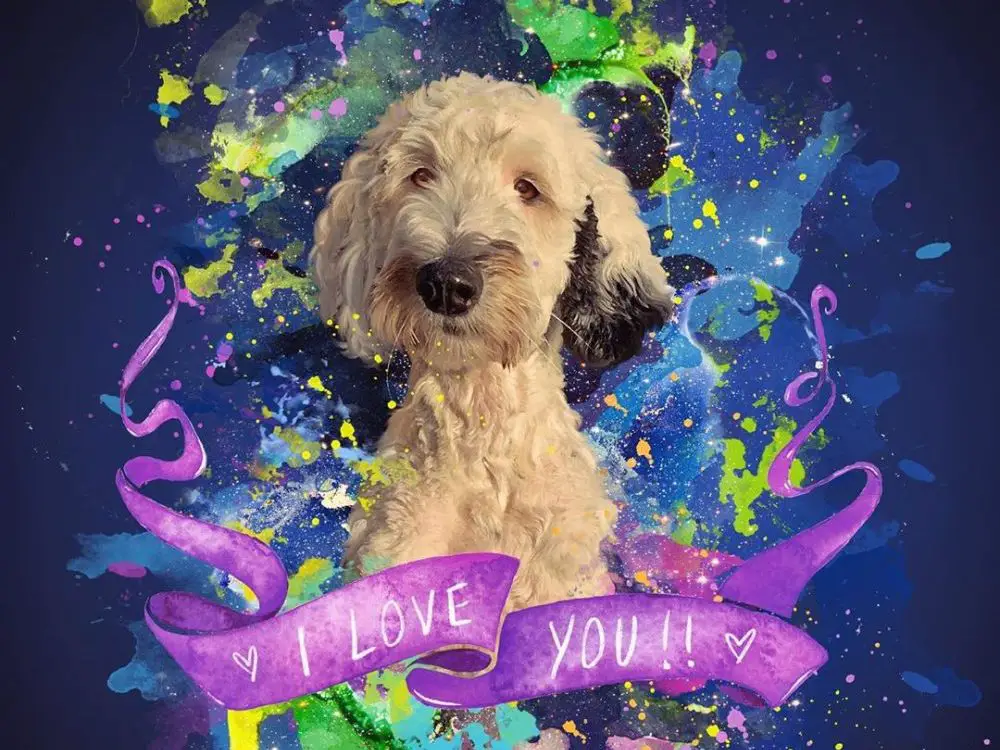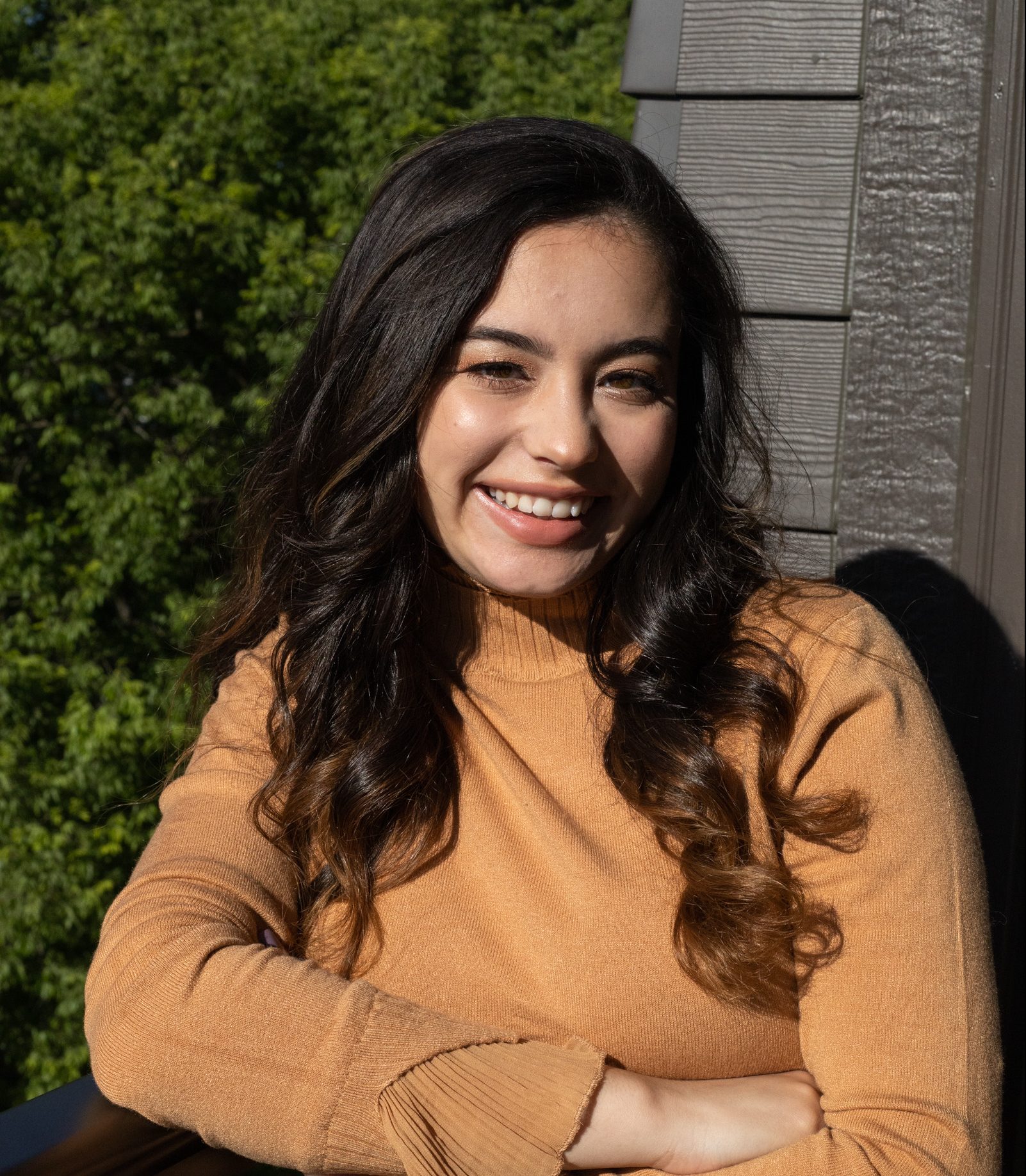If you are a TikTok user, you’ve likely encountered Bunny the sheepadoodle in the midst of all your scrolling. If you can’t quite recognize her by name, perhaps you recall a friendly black and white dog surrounded by a layout of colorful buttons.
Bunny, trained by her owner Alexis Devine, relies on a collection of buttons that allow her to convey a variety of prerecorded thoughts. These words are relevant to Bunny’s everyday activities and consist of basic words such as outside, beach, play, concerned, mom, dad, poop and many others. This method of communication uses an Augmentative Alternative Communication (AAC) device that provides ways of verbalizing for those who rely on nonverbal communication. Bunny uses it by simply pressing the respective buttons with her front paws
Speech-language pathologist Christina Hunger was the first to discover how training dogs to communicate via button-pushing can unlock a whole new relationship with our pups that had never been possible. Hunger’s blog features her dog Stella’s progress in mastering the art of humanlike communication.
Inspired by Stella’s developing conversational skills, Devine wanted to teach Bunny to do the same. But how have the two dog-moms managed to implement this complex communication into their pups’ daily routines?
@whataboutbunny So Chatty! #fyp #whataboutbunny #talkingdog #sheepadoodle #dailydog #cutedog #dogtraining #tiktokdog #aac #smartdog #dog #viral #tiktoktrends #smart
As recommended by FluentPet, Devine and Hunger organized their buttons into interlocking hexagon patterns that separate the words into related sentence parts. Bunny’s buttons are grouped into six hexes: subjects or people, verbs, social starters, objects, places and adjectives or adverbs. This method helps the learner more accurately organize words into comprehensible sentences.
Though this setup may seem overwhelming to both you and your learner, don’t worry — Hunger breaks down this process by explaining a few crucial steps that will help prepare your pup to learn how to talk.
First and foremost, it is important that you speak to your dog frequently, just as you would a baby or toddler. If you are a dog owner, you’re likely aware of how quickly they are able to latch onto words they like. Treat, walk, beach, drive — you name it.
Solidifying the meaning of these words before introducing buttons to your learner is an excellent foundation for your pup’s communication learning process.
Hunger notes that it’s equally as necessary to observe the words you most frequently use when talking to your dog.
“We just need to be aware of our own vocabulary patterns because our dogs are learning what we say,” she said. “For example, when talking about meal times, I instinctively say ‘eat’ most frequently. But, you might say ‘food,’ or ‘hungry’ more than you say ‘eat.’ This would be important to realize before choosing words to teach your dog. You will want to choose the words your dog is hearing most often and therefore is likely understanding best.”
Hunger provides her readers with a chart that will allow you to examine the language you are using with your dog, as well as which words will be best to record for your learner’s buttons.
As soon as you’ve gained an understanding of which words your dog understands, you can gradually begin to incorporate the buttons. Hunger suggests pups best pick up on the button-pressing when it is first modeled to them. If you are getting ready to take your dog on a walk, you should orally say “walk,” as well as press the “walk” button.
FluentPet offers many button options to get trainers started with the learning process. Whether you’d like to try a single button that will allow your dog to notify you when it’s time to go outside, or you’re committed to teaching him fluency in human speak, there are five button packs that will help owners successfully teach their pets.
Though this process seems straightforward, Devine says that it’s extremely important to be patient with your learner, as dogs need lots of time to process this new skill.
“Patience is key,” she said. “We are learning from our small population of beta testers, that responses can take between 10 to 40 seconds. Be careful not to rush your pup. They take a good deal longer to process and respond than humans do. It seems that you can interrupt that process by repeating or reiterating too quickly.”
Devine says that Bunny will often walk in a circle before responding to a question or command. If she completes her circle and still hasn’t provided a response, Devine will model her question again. And this process has clearly worked for Bunny as she has successfully learned how to communicate all kinds of complex thoughts, including when something is hurting her.
In a recent video, Bunny presses “help” and “ouch,” offering her paw to Devine. After inspecting, Devine finds a foxtail awn in her fur. Its sharp needles were clearly prodding at Bunny’s skin, and she was able to communicate this to her mom.
@whataboutbunny
Another video features Devine pressing “Bunny,” “want,” “play,” “now” and “hm?” After pacing in her familiar circle, Bunny presses “sound” and “paw,” referring to the squeaky toy in Devine’s “paw.”
Although Bunny’s communication skills are undoubtedly impressive, it is often questioned whether she truly understands what she is saying. Devine notes that Bunny is always learning, even when she seems to be pressing random buttons. This is similar to the early stages of a toddler learning to speak — babbling is crucial in the learner’s language development.
As far as skepticism goes, Devine admits that she often questions whether Bunny’s communication is real.
“I’m not a scientist, but I recognize that large amounts of data need to be collected before we can make a judgment as to whether or not Bunny actually understands what she’s saying. I’m also aware that I notably skew the data in favor of saying that Bunny is conscientiously communicating with me … Where my skepticism wins and I wonder ‘what if?’ I mean, that’s the dream right? For our animals to be able to tell us they love us, to tell us when they’re sick, to express their needs and wants.”
Whether Bunny, Stella or other talking pups have truly mastered how to speak with their humans, Devine and Hunger are committed to giving their dogs as much of a voice as possible.
“Each dog has a voice that should be heard, and I hope you will find out what your dog is begging to tell you!” says Hunger.

















